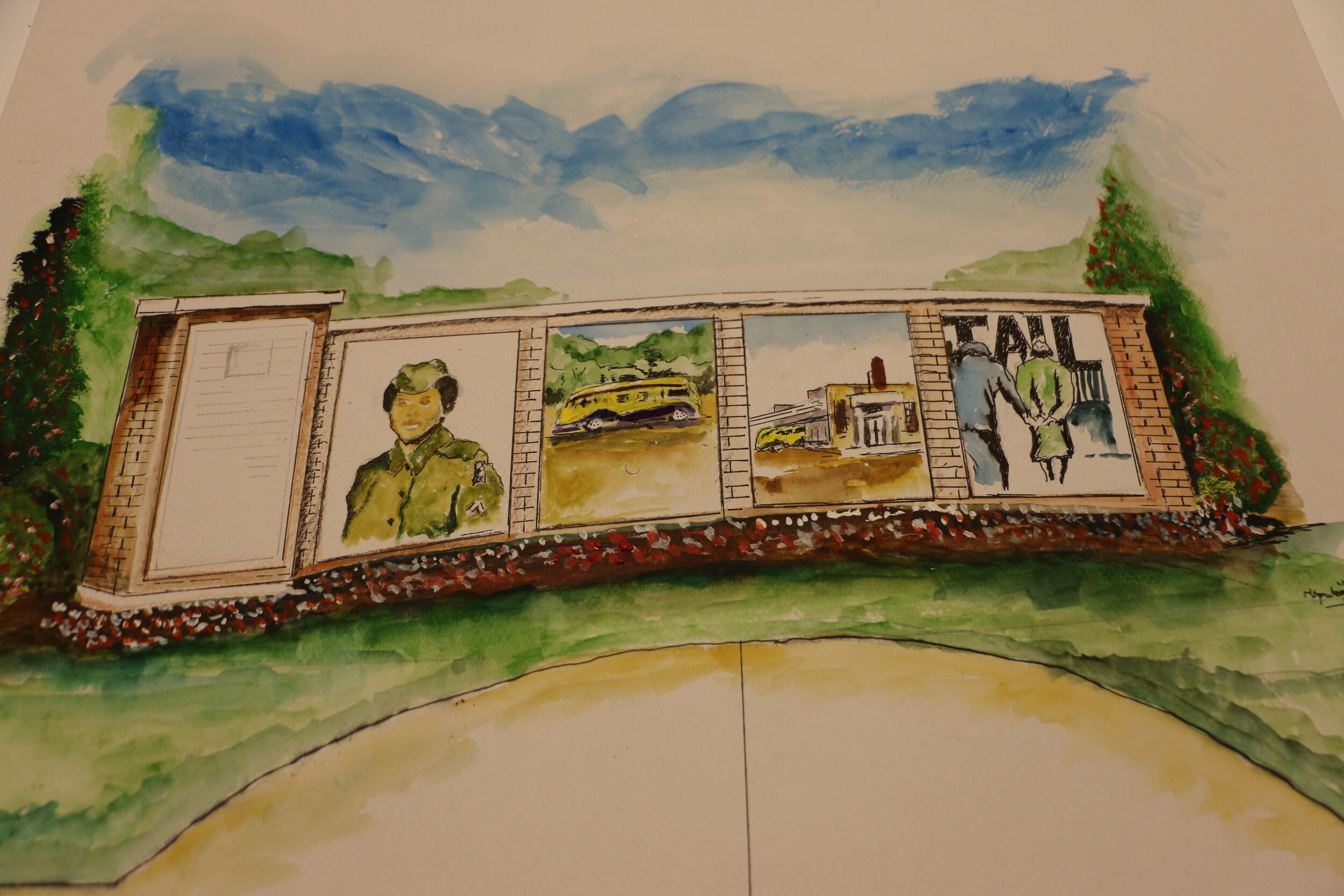Above: Chronological art sketches by Napoleon Hill, who created a community space mural honoring Sarah Keys Evans, a Women’s Army Corps private, arrested on August 2, 1952 (while in her Women’s Army Corps uniform) for refusing to relinquish her seat and move to the rear of an interstate bus in Roanoke Rapids, NC. The case was brought before the Interstate Commerce Commission in Sarah Keys v. Carolina Coach Company and settled in 1955 with the ICC ruling in her favor. Dignity Justified highlights this story and the artwork to promote a neglected history story, as this civil rights event preceded (as did others) the Montgomery Bus Boycott..
Overview of the presentation categories
Cultural heritage
Dignity Justified uses pictorial images, ideas and stories to provide a panoramic view of how people of different social backgrounds and race have sacrificed so much to demand human dignity. Believing those stories should be at the forefront of American cultural heritage, let’s start with a definition from the United Nations Educational, Scientific and Cultural Organization (UNESCO). The organization notes cultural heritage as 'the legacy of physical artefacts and intangible attributes of a group or society that are inherited from past generations, maintained in the present and bestowed for the benefit of future generations'.
With this definition in mind, Dignity Justified uses cultural heritage items including, art, newspapers, manuscripts, currency, oral traditions, racist memorabilia, books, slave related artifacts, etc. to showcase visual materials pertaining to African American experiences for informational and educational purposes.
The stamp art, entitled “1948 Executive Order 9981,” commemorates the 1948 legislation to end racial segregation in the military is a pictorial image used by Dignity Justified to provide learning opportunities about the role of African Americans in the military.
pictorial images of Art, artifacts, and collectibles
Dignity Justified promotes the use of images of photographs, stamps, posters, primary source materials, etc to promote interactive and collaborative resource learning, especially in schools and communities. Our emphasis is on enrichment, legacy, and understanding self and society. We have also obtained copyright permission to use images from national archive facilities.
racist memorabilia
Exploring depictions of African Americans which appeared on thousands of products, with many being reproduced, imported, and sold today without regard for their impact on minimizing humanity, Dignity Justified uses images of racist artifacts to examine perceptions of Africans Americans in society. A specific category of interest is the historical visual agenda of depicting African American children horribly—including alligator bait, disruptors, pickaninnies, carnival ball game targets, and even as animal like in nature (to blur the lines between human and animal). Behind the images was a strategy of dehumanization that the African American community has battled for ages.
above image: Artifact shown displays the unthinkable notion of a child straddling an alligator (in the form of a liquor decanter).



